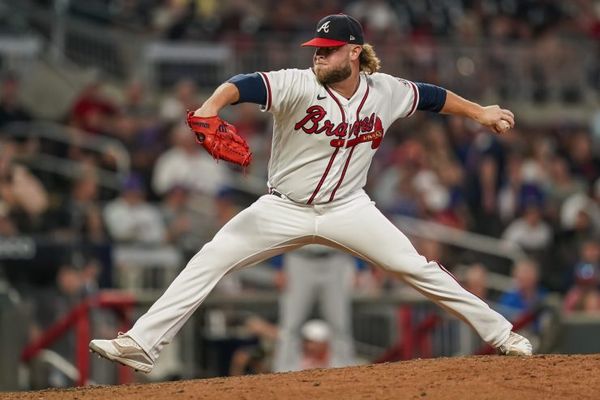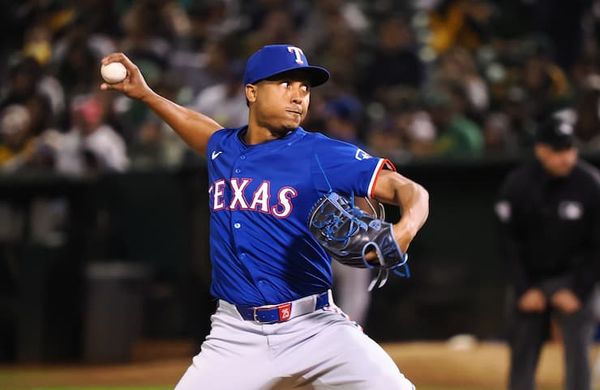
Leading up to the Baseball Hall of Fame class announcement on Jan. 21, we’ve been examining the cases of notable candidates every week. We’ve already covered Félix Hernández, CC Sabathia, Andruw Jones, Francisco Rodríguez, Ichiro Suzuki and a trio of second basemen in Chase Utley, Dustin Pedroia and Ian Kinsler. Our final case analysis revolves around Billy Wagner, who’s in his 10th and final year of BBWAA eligibility.
The primary objective of pitching is to suppress hitting. Over the past 105 years, Billy Wagner is one of the best pitchers at the most elemental definition of the craft—while pitching mostly with the game on the line.
Folks, that is a Hall of Famer. No need to complicate it.
Wagner was historically difficult to hit. He also did so while, year after year, managers trusted him in the highest leverage situations right to the end of his career. That is the short reason why Wagner should be elected to the Hall of Fame when voting results of the Baseball Writers Association of America are announced Tuesday.
And yet, it’s a cliffhanger. Wagner missed by five votes last year. This is his 10th and final year on the writers’ ballot. It would be enormously cruel if he is short again.
Wagner grew up right-handed but learned to throw left-handed after breaking his right arm twice as a youngster. He developed not just a ferociously strong arm but a compact throwing motion that baffled hitters. Wagner did not take the ball down after he took it out of his glove. He kept the ball no lower than chest high, creating a “short arm” path that made his release difficult for hitters to time.
He also threw with a low release point: just 5.1 feet off the ground. By throwing from that low spot to the upper limit of the strike zone with an upper-90s fastball, Wagner benefited from an ideal vertical attack angle before that terminology existed. He was the master of “vert” before the hip kids were throwing bullpens with an iPad nearby.
Everybody prepared for that deception and velocity, and still hitters could not adjust. And when Wagner, with the help of Randy Johnson, perfected the path of his slider to make it more resemble a fastball out of his hand, hitters were cooked.
How hard was Wagner to hit? There have been 1,173 pitchers who have thrown 900 innings in the Live Ball Era (since 1920). Wagner ranks:
- First in batting average allowed (.187; Nolan Ryan is second and Sandy Koufax third).
- First in strikeout percentage (33.2%; Jacob deGrom is second).
- Second in WHIP (0.994; deGrom is first).
- Second in OBP allowed (.262; deGrom is first).
- Second in OPS allowed (.558; Mariano Rivera is first).
- Third in lowest slugging (.296; Rivera is first and J.R. Richard second).

Let’s address the two biggest knocks on Wagner.
1. He didn’t pitch enough.
Wagner threw 903 innings. In his final season, at age 38, he posted a 1.37 ERA, struck out 104 batters in 69 1/3 innings and saved 37 games. There was more in the tank, but he went home to his family.
Now think about how often Wagner pitched with the game on the line. He rang up 422 saves. Here are the pitchers with the highest average leverage index (min. 900 innings): 1. Bruce Sutter, 1.97; 2. Trevor Hoffman, 1.92; 3. John Franco, 1.89; 4. Mariano Rivera, 1.87; 5. Lee Smith, 1.86; 6. Wagner, 1.81.
He pitched plenty, especially meaningful innings.
2. He performed poorly in the postseason.
This is true. Wagner threw only 11 2/3 postseason innings in 14 appearances. He posted a 10.03 ERA. He had four save chances and his team won all four games (three converted saves and a win after a blown save).
Here are some assorted small-sample postseason batting averages: Joe Morgan .182, Andre Dawson .186; Eddie Mathews .200, Ted Williams .200. And the same drill with postseason ERA: Hal Newhouser 6.53; Gaylord Perry 6.14; Bob Feller 5.02.
It happens. The postseason is a chance to add to your legacy with extra credit. The samples are too small to hold against a player.
Here is one more way to look at Wagner’s dominance and, yes, the prolific nature of his career when it came to pitching with the game on the line. When a manager brings his closer in with a small lead, the skipper wants the win salted away with as little drama as possible. Think about getting a save while allowing no baserunners. I’m going to call it a Door Slam—no drama, no baserunners, no sweat. The perfect kind of save. Here is the all-time list for most Door Slams:
I expect someday all six on that list will be in the Hall of Fame. Like Jack Morris and Fred McGriff, Wagner would be an easy electee with one of the Hall of Fame’s oversight committees if he doesn’t get elected by the writers. He has one more shot with the writers on Tuesday. He needs 75% of the vote to be elected. Major league hitters already have spoken. Over 16 years trying to solve Wagner, they determined he was one of the toughest pitchers to hit who ever took the mound.
More MLB on Sports Illustrated
This article was originally published on www.si.com as Billy Wagner’s Whiffs Should Help Him Cinch Election to the Hall of Fame.










